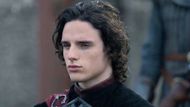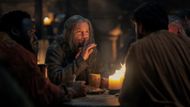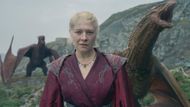House of the Dragon, the much-awaited prequel of the Game of Thrones series, was released on HBO Max on August 21, 2022. So far, two seasons have been released, with Season 1 laying out the foundation of the socio-political upheaval of the Targaryen dynasty and Season 2 adding greater depth to the complexity of the civil war of this family, the infamous Dance of the Dragons.
Audiences have been enthralled by the intricate characters, grandiose epic battles with dragons, and the intense struggles for power while remaining true to the comprehensive lore of Westeros but offering an original narrative spin.
The show is adapted from George R.R. Martin’s book Fire & Blood, a fictional history written from the point of view of Archmaester Gyldayn, recounting the history of House Targaryen. Unlike Game of Thrones' narrative approach of direct adaptations of A Song of Ice and Fire novels, House of the Dragon's narrative strategy is more historicist and documentarian.
The showrunners have adopted the fragmented, at times conflicting narratives of the book by examining varying viewpoints and motivations of pivotal events of history, frequently straying from the details of the book while keeping the broad outlines of the historical actualities. This technique has enabled the show to explore deeper character psychology and breathe life into the Targaryens beyond their mythological status.
At the end of House of the Dragon Season 2, viewers are left at the brink of a war between the Greens and the Blacks, groups that also represent rival succession to the Iron Throne by Alicent Hightower and Rhaenyra Targaryen, respectively. House of the Dragon Season 3 started production early in 2025, with a potential release around mid-year 2026.
Hitherto, there has been a great deal of speculation regarding the next steps. Let’s explore potential plot advancements, character growth, and epic battles that will mark Westeros' future from Season 3 of House of the Dragon.
House of the Dragon: Rhaena Targaryen and dragon bonding

The quest of Rhaena Targaryen to bond with a wild dragon of the Vale is a subplot borrowed from George R.R. Martin's Fire & Blood, but with considerable creative intertwining of the book's lore. Season 2 ends with Rhaena finding an unclaimed wild dragon named Sheepstealer. It provides an opportunity for her to become a dragonrider as well as significantly strengthen Team Black.
In the original book, it was actually Nettles, a "dragonseed" from Driftmark, a commoner but of Targaryen blood heritage, who bonds with the wild dragon Sheepstealer. But the series has combined these two plotlines by providing Rhaena with the trajectory of acquiring Sheepstealer, thus elevating her standing above that of the first book.
Through such an evolution, Rhaena gets to bond with an adult wild dragon instead of hatching a dragon egg like in the first book, wherein she ultimately bonds with a miniature-sized dragon known as Morning after its egg gets hatched at the Vale.
Claiming Sheepstealer is a big moment for Rhaena within the series, marking the moment she shifts from being a relatively sideline character to an important dragonrider and battle warrior. House of the Dragon Season 3 will presumably describe her attempts at breaking and fully bonding with Sheepstealer, echoing Nettles's troubled relationship with the creature in Fire & Blood.
The Battle of the Gullet

The Battle of the Gullet is a big sea battle during the Targaryen civil war, referred to as the Dance of the Dragons, in 130 AC (After Conquest). It occurs at the Gullet, a strategic waterway between the Crownlands, Driftmark, and Dragonstone, an essential sea choke point that controls passage to King's Landing as well as the Blackwater Bay.
This sea battle is central to the bigger war portrayed within House of the Dragon because it consists of the fleets of House Velaryon, who are loyal to Rhaenyra Targaryen (Team Black), defending the siege of King's Landing against a joint fleet of the Greens, who are aligned with the Triarchy: the Free Cities alliance of Myr, Lys, and Tyrosh. The goal of the Greens is to breach the siege and resupply King's Landing while endeavouring to sever the naval superiority of the Blacks.
The battle involves fierce sea fighting and aerial dogfights against dragons, with major players like Prince Jacaerys Velaryon, who heads the Blacks' dragonmen, and Corlys Velaryon, who controls the ships. Importantly, the battle causes serious losses, as the death of Jacaerys and the capture of Prince Viserys by the enemy have serious implications on the Targaryen family and the war itself.
Although the Greens strategically win the war by crippling the Velaryon fleet and causing great losses, the Blacks hold strategic control of the sea lanes of the region. The outcome involves the fraying of the Greens' alliances, civil war between their Triarch allies, and eventual costs for the leadership of the Targaryen dynasty.
House of the Dragon Season 2 set viewers up for this epic battle, with the ending episodes building towards the naval blockade, the agreement with the Triarchy, and the lining up of the fleets for battle. It is speculated that Season 3 will commence with the Battle of the Gullet and will combine naval battle with high-drama dragon battle.
The war will be a crucial one that will change the momentum towards that of Rhaenyra's faction by bringing out both the viciousness of war and personal losses incurred by the Targaryens. It will create platforms for large-scale political and military actions that will determine the rest of the civil war.
Betrayal and shifting allegiances

In House of the Dragon, betrayal and shifting allegiances are at the very center of the raging civil war that is the Dance of the Dragons. Two of the principal traitors, Ulf White and Hugh Hammer (referenced by lore as the "Two Betrayers"), shockingly change the direction of the war by shifting allegiances.
Ulf and Hugh are also "dragonseeds," commoners who share Targaryen blood but have also become dragon riders: Ulf on the dragon Silverwing, while Hugh is on Vermithor, an extremely big dragon. They are loyalists of the faction of Rhaenyra Targaryen's (the Blacks), but famously betray her at the First Battle of Tumbleton by switching sides to the Greens. That act of betrayal severely weakens the war effort of the Blacks, bringing about essential losses.
Sources state that while Ulf is represented as a cold-hearted opportunist, the betrayal of Hugh could provide a richer narrative within the series. Hugh's reasons, as per certain theories by the fandom and reviews, could be drawn from personal tragedy and perceived insults, like the death of his wife in the war, which triggers his anger and sees him switch allegiance. Hugh himself proclaims himself king for a moment, puts on a crown, and causes bedlam while fighting over Tumbleton.
In addition to the Two Betrayers, House of the Dragon demonstrates shifting allegiances in an uncertain and violent landscape. Characters like Ser Alfred Broome are set up as future turncoats of Rhaenyra with promises of power and land for changing their loyalty over to the Greens.
Moreover, the resentment and political manoeuvring between the Blacks and the Greens, as well as fracturing allegiances within each camp, lie at the heart of the war's mounting bloodshed.
House of the Dragon Season 3 is likely to explore its betrayals more deeply, with changing allegiances affecting crucial battles and character development.
Expanding cast and character arcs

Daeron Targaryen, the third son of Alicent Hightower, has been confirmed by George R. R. Martin to play an expanded and more prominent part in House of the Dragon Season 3. So far, Daeron has appeared only by name but off-screen for the most part, spending his time at Oldtown, just as we have seen from the books. He will presumably reappear alongside his grandfather, Lord Ormund Hightower of Harrenhal, to bring their strength over to the faction of the Greens constituting the current civil war.
Daeron is characterized within the source materials as particularly different from his elder brothers, yet he does hold extensive influence within the Greens camp himself and rides his very own personal dragon, Tessarion, which is noted for its swiftness but not its size.
The series will presumably detail the full tale of Daeron's storyline as a leading dragonrider and tactician. He will bring another potential aerial danger that the Blacks will need to contend with. His storyline could also include sad parts, such as Daeron's death in the book, perhaps the saddest scene of the Dance of the Dragons.
At the same time, Aemond Targaryen, another of Alicent and Viserys's sons, is set to play a key military leadership role in the Riverlands war. House of the Dragon Season 2 established him well in his character development, particularly with his partnership with Ser Criston Cole, an intricate relationship of political motives and personal loyalty. Together, Aemond and Criston command the Greens' forces in the Riverlands, including an effort to seize Harrenhal from Daemon Targaryen's leadership.
Aemond's war will be about ferocious military battles and politics. His relationship with Criston Cole, training him in combat and strategy, is mentioned as a crucial relationship that will decide the fate of future battles. This relationship also finds thematic motifs of manipulation, ambition, and power.
Challenges to peace and power

Alicent Hightower's offer to Rhaenyra Targaryen at the end of House of the Dragon Season 2 is indeed a strategic and complicated proposal fraught with political and personal tensions. Alicent approaches Rhaenyra with a hope to end the devastating civil war by offering her a chance to claim the Iron Throne peacefully if she agrees to come to King’s Landing without further bloodshed.
Alicent’s plan includes her own exit with her daughter Helaena and granddaughter, hoping to escape the cycle of violence and political intrigue. This proposal is also heavily burdened by the absence of Rhaenyra's oldest son, Aegon, who is not present at King's Landing during this pivotal moment.
Aegon's existence has always been an obstacle to peace because he openly disputes Rhaenyra's rightful place on the throne and has major powers loyal to the Greens who support him.
Rhaenyra's consent to the proposal is only on the condition of Alicent handing Aegon over to her, an indication that any peaceful passing of the crown would mean his doom.
Rhaenyra's unwillingness to escape or surrender reveals an irrevocable belief that she is destined to reign by blood rights and duty to secure the realm at any personal cost. Alicent's proposal, although frank in its purpose for peace, is tempered by the history of treachery and the wavering allegiances that have maintained the war in House of the Dragon.
While Fire & Blood provides a comprehensive history of the Targaryen dynasty, Season 3 will presumably detail essential battles and political turmoil leading directly to the climax of the Dance of the Dragons. The show will perhaps also elaborate upon secondary events and figures from the book itself to surprise viewers. Battles like those at Tumbleton and the ultimate battle at God's Eye are expected within forthcoming seasons, leading towards a rich narrative arc ahead.
